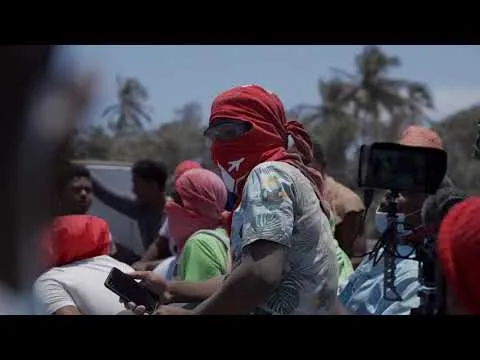While it was Easter at home for many people, thousands of people fled one of the biggest volcanic eruptions of the 21st century
There are around 1500 volcanoes on Earth, of which nearly seven hundred and fifty have been active in the last few hundred years. One of these is La Soufrière volcano, which erupted in the Caribbean in April. Although local volcanologist Richard Robertson was able to prevent the eruption from killing thousands of people, the impact of the natural disaster is far from over.

Richard Robertson
Image source: https://nautiluslive.org.
Richard Robertson was a child when he witnessed the first volcanic eruption of his life. This childhood experience had such an impact on him that he decided to study volcanology. He dedicated his life to the observation and study of volcanoes. All that learning, hard work and perseverance turned into a life-changing event last December: Robertson saved the lives of thousands of people.

Image source: https://cdn.pixabay.com.
La Soufrière, in its birthplace in the Caribbean, showed the first signs of activity in more than 40 years. The eruption did not receive much media attention, as only a slow lava flow began to erupt in the volcano's crater. The process continued until early April, when the lava dome swelled to several million cubic metres. Then, in late March, Robertson detected unusual earthquake signals. They became more frequent and more intense until, on the seventh of April, the volcano began to vent gas. By then, Robertson knew that an explosive eruption could be triggered at any time, so he issued a red alert and immediately began evacuating more than 20 000 people living in the red zone.
La Soufriére, the dormant volcano

Image source: https://upload.wikimedia.org.
Two months ago, on the 9th of April, an explosive eruption began in the northern Caribbean island of Saint Vincent. The huge ash cloud enveloped the island, which is smaller than Budapest, in darkness, causing a power cut. La Soufrière has not erupted many times in its history, but it can take weeks to erupt. A similar eruption started in 1902, but the lack of accurate forecasts killed 1,700 people. This tragedy fundamentally changed the way we think about volcano monitoring and triggered the development of volcano observatories for continuous monitoring. La Soufrière in 1902 did not only claim lives: it also destroyed the last remnants of the indigenous culture of the Caribbean.
The impact of the recent eruption
Even though La Soufrière is located on the other side of the Earth, an explosion of this size could have a significant impact, even on a global scale. Not only could it stop air traffic, but it could also cause lasting changes to the Earth's climate and community life. Research into the explosion and its consequences is ongoing, but some results have already been made public.
Although the evacuation started on time, thanks to Robertson, there were residents, who remained in the danger zone, ignoring instructions. A total of 127 people from one of the communities near the volcano had to be evacuated, and were hosted by the surrounding islands of St Lucia, Grenada, Barbados and Antigua. As of the 31 of May, approximately 3900 people remained in temporary homes.
Those living in the red zones closest to the volcano are not yet able to return home, while others are trapped in shelters because of ash and debris.
Although no deaths or injuries have been reported by the authorities, large debris particles from the volcanic ash are damaging the environment and houses. The island's agriculture has suffered huge damage: the ash layer on the crops prevents them from getting sunlight and nutrients, while animals are deprived of sufficient quantities of good quality food and water. People were saved by evacuation, but the animals had no choice but to stay and wait out the end of the disaster.
International assistance
Several organisations, including the United Nations and UNICEF, have collected aid to support people made homeless by the explosion and to contribute to the reconstruction of the area.
The United Nations has launched a funding appeal for $29.2 million specifically to address basic needs. The areas most affected are water, sanitation, shelter and housing, clean-up, food security and agriculture.
The clean-up and damage assessment is still ongoing. It is not known exactly how much damage has been done to the island's ecosystem, but it is certain that thousands of people have been rescued thanks to Robertson.
